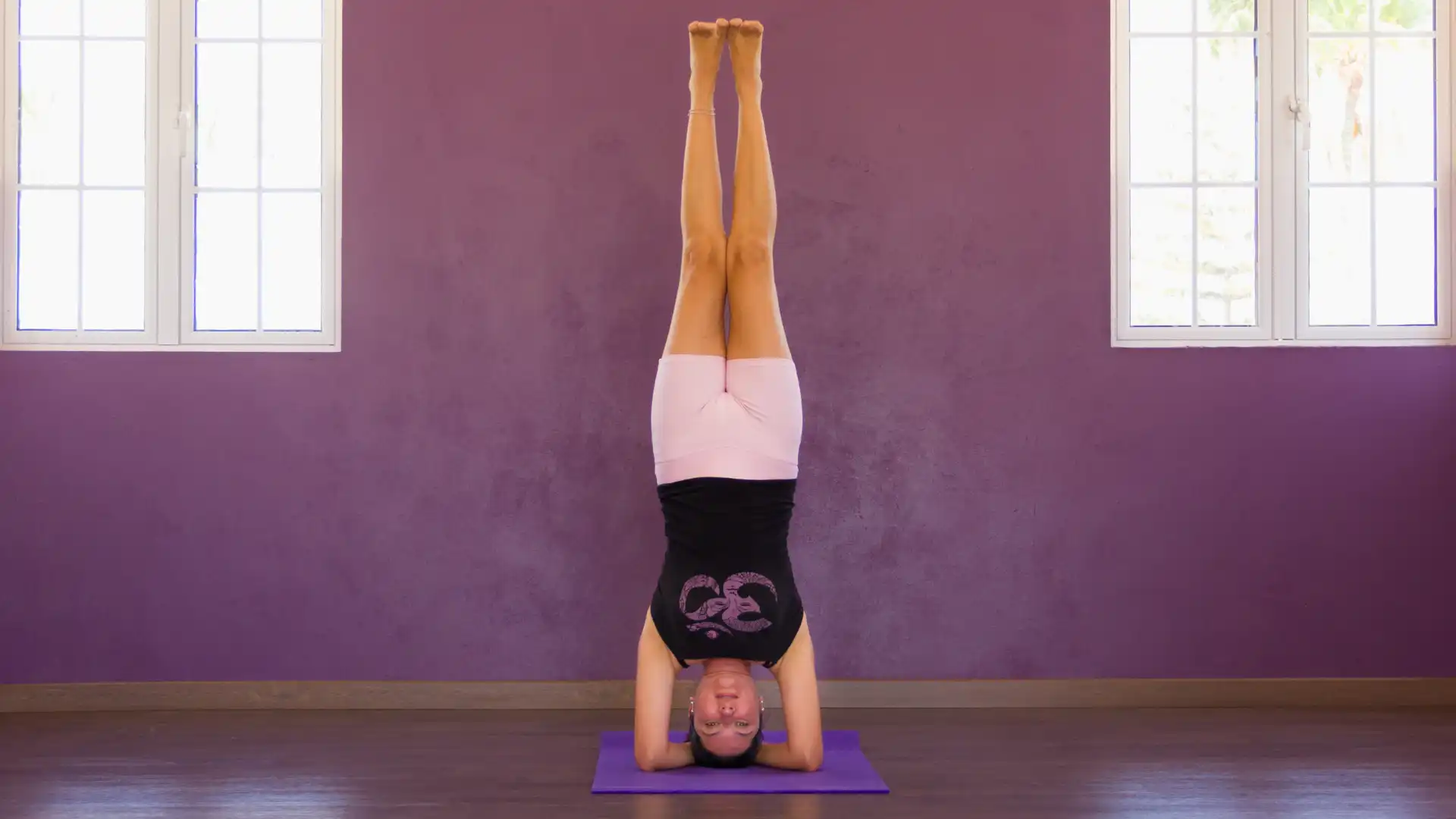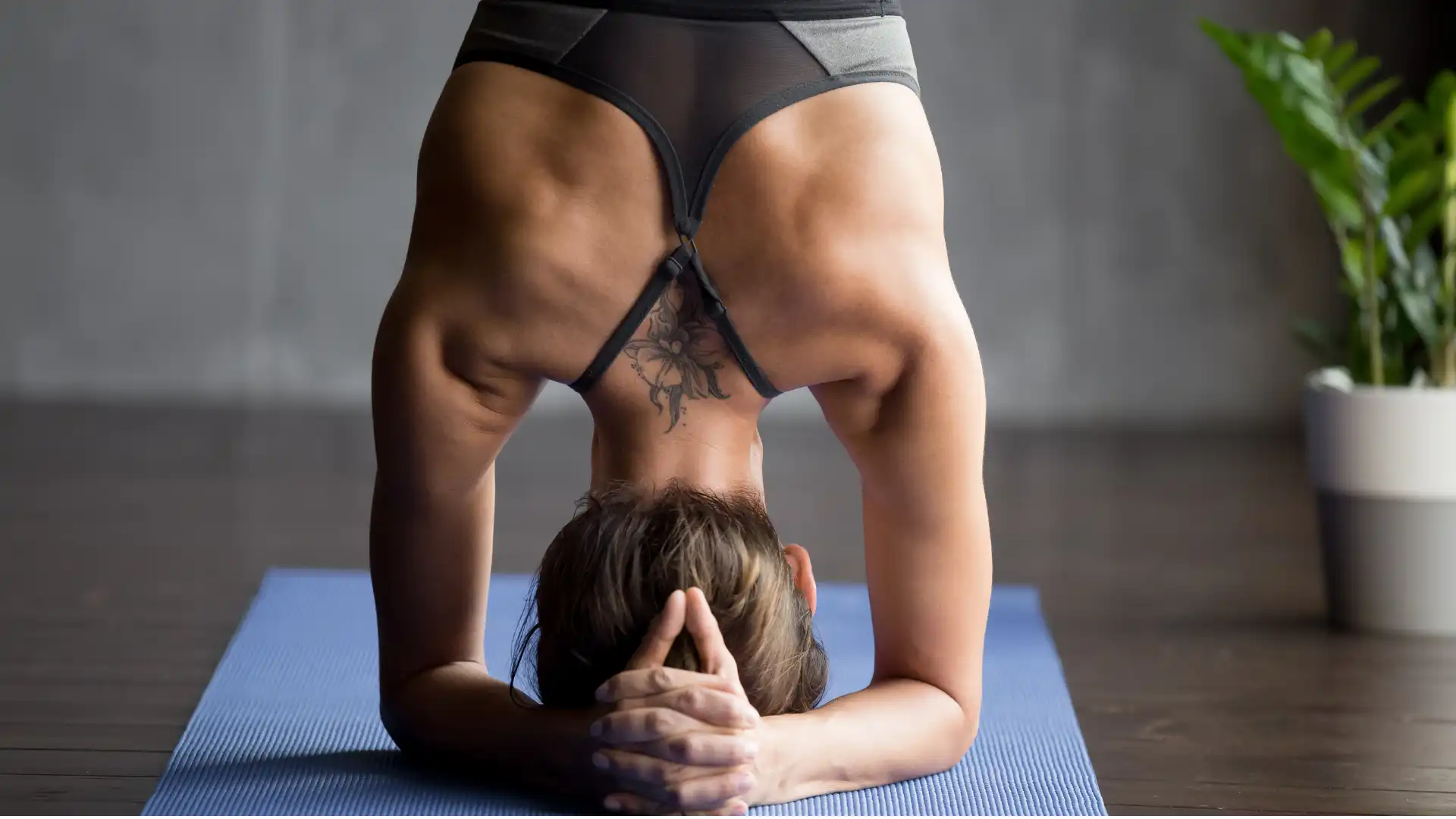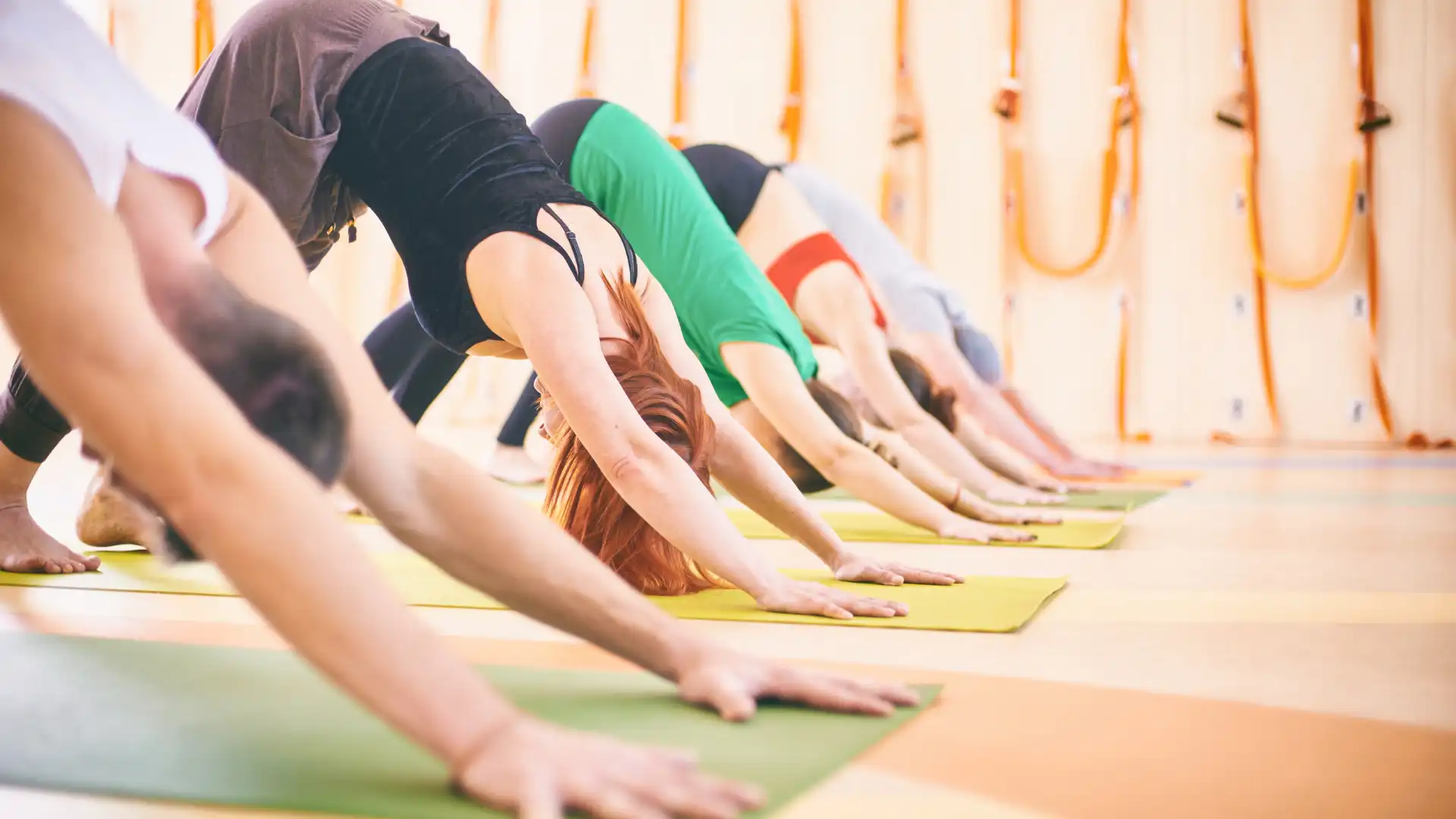A Heads-Up About Headstand

Headstand (Sirsasana) has long been considered an essential component of traditional yoga asana practice. Coupled with Shoulderstand (Sarvangasana), they are called the King and Queen poses, and many styles of yoga encourage the daily practice of these inversions. Headstand is considered to be energizing; Shoulderstand is calming. Together, they are said to perfectly balance our human nervous systems.
However, as Headstand has come into Western culture, many people have expressed concern about neck safety. As a physical therapist, I share these concerns and feel that months, if not years, of preparatory work are needed to prepare the body to stand on one’s head.

Why Headstand Can Be Risky
Let’s first consider spinal alignment. Ideally, the spine, with its normal curves, should be vertical, with the ear over the shoulder, shoulder over the hip, and so forth. Many people in a sedentary society have a chronically forward head, due to long hours of paperwork and keyboard work, as well as a flattened neck curve caused by constantly looking down. Putting a load of weight on the neck, upside down when it is chronically flat, and the head forward puts a huge strain on the neck and upper back.
Second, let’s consider the size of the neck vertebrae and intervertebral discs. Take a look at the whole spine, whether you have access to a full-size model or just a picture. Notice the size of the neck vertebrae, which are designed to bear the weight of the head, which weighs 10 to 14 pounds on average. Now, look at the much-larger low back vertebrae, which are designed to bear the weight of the upper body, about half of your total weight. Now imagine Headstand, with ALL of your body weight on the little neck vertebrae and discs. This produces a large compressive force that they were not designed to bear.

How to Prepare for a Safe Headstand
To overcome these potential problems, I feel that careful preparatory work is essential. First, postural problems must be corrected. Practicing standing poses with your back to the wall can teach you how to align your head over your shoulders. You can even start simply in Tadasana (Mountain Pose) with your head, shoulders, and hips touching the wall. Make sure that your chin and gaze are level.
Practitioners should also increase strength in the arms and shoulders in order to take at least part of the weight off the neck, and stabilize the body weight in healthy alignment over the head and neck in a Headstand. Regular practice of Downward Facing Dog Pose (Adho Mukha Svanasana) and Plank Pose (Phalakasana) strengthens the muscles we need to bear weight on the arms, and you should also increase hold times in these poses to develop endurance.
Even if you already have a strong practice including standing poses and poses that bear weight on your arms, it’s also most helpful to work with an experienced teacher to check your alignment. For example, you may think that you have a normal curve in your neck, but the teacher can see that your neck is actually flat. In Headstand, you may have to put the weight more forward, toward the forehead, to put more curve in your neck, and an experienced teacher can help you refine your position.
Remember that yoga is ideally a practice of healing. If you have a history of neck injuries or know that you have arthritis in your neck, you may choose to forgo this pose. If you do want to practice Headstand, don’t be tempted to rush into it before you’re ready, thereby risking neck strain or injury. Give yourself time to prepare for this traditional pose. In so doing, you will also develop patience and persistence, and continue your work toward optimal health.
Also, read...
4 Easy Ways to Use a Sandbag in Yoga Practice
Exercise and Longevity: Diversify Your Yoga Practice for Maximum Benefits
Glute Amnesia: Yoga for Your Forgotten Rear
Related courses
Breath as Medicine: Yogic Breathing for Vital Aging
Yoga and Myofascial Release: Releasing Chronic Tension with the Bodymind Ballwork Method

 Julie Gudmestad, PT, C-IAYT, has been active in Portland, Oregon, as a yoga teacher and licensed physical therapist for over 40 years. She has integrated her western medical knowledge with yoga training into a unique teaching style and regularly teaches anatomy and asana workshops throughout the US, Canada, and Europe.
Julie Gudmestad, PT, C-IAYT, has been active in Portland, Oregon, as a yoga teacher and licensed physical therapist for over 40 years. She has integrated her western medical knowledge with yoga training into a unique teaching style and regularly teaches anatomy and asana workshops throughout the US, Canada, and Europe.
Julie was a certified Iyengar Yoga Teacher for over 30 years and now maintains Yoga Alliance certification at the ERYT-500 level. In addition to her PT license, she is also a certified Yoga Therapist through IAYT. For many years, she was the author of the Yoga Journal magazine’s “Anatomy of a Yogi” column. She continues to produce continuing education programs for yoga teachers and students, including webinars and videos through YogaUOnline, and online videos through her home studio, Paxson Yoga Center in Portland.



